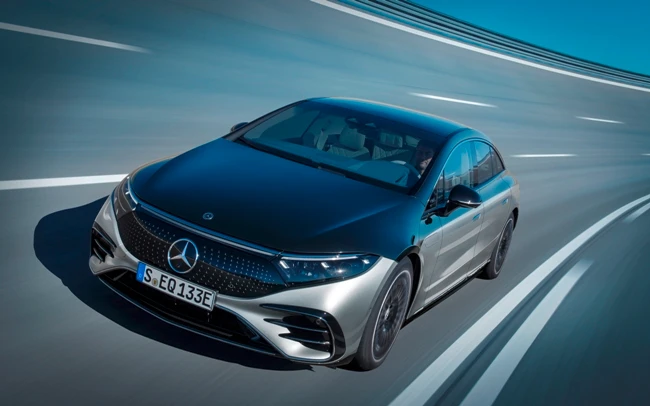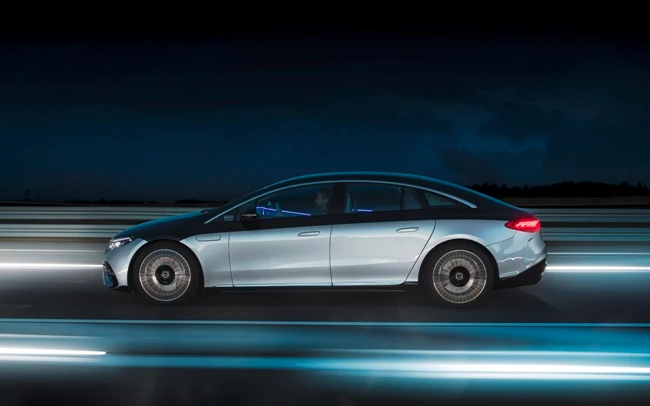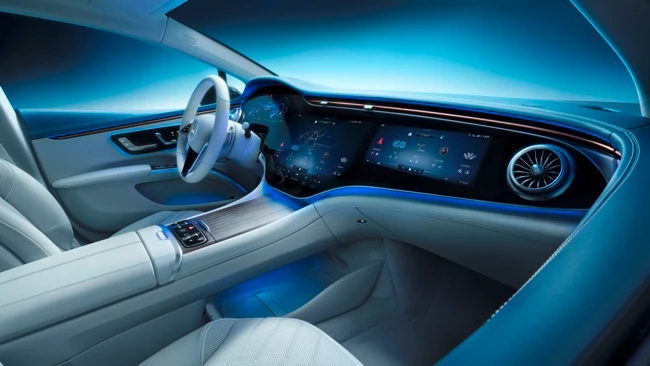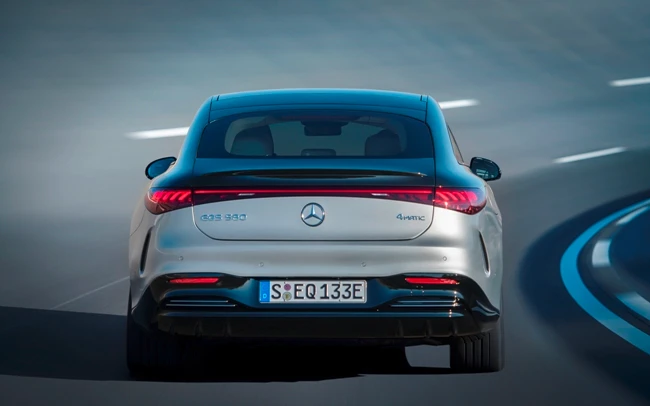Technical
Tips for Teaching a Person Learning to Drive

It’s that time in the life of a Dad or Mum where your daughter or son has got to the age of learning to drive. For some, this is a time where stress levels begin to rise; just the thought of having to go through busy intersections with a rather nervous learner isn’t something for the faint-hearted. However, it can be a very rewarding time where you get to hand that little bit more independence and responsibility over to your teenager. Here are some tips from someone who has gone through this stage in life twice; actually three times, if you include the time when I was at university and gave lessons to a good mate of mine who still hadn’t been behind the wheel of a car by the time he was 21.
First of all, the teenager will need to get a learner permit. For this, your child needs to be 16 years old. The only exception is in the ACT, where the minimum age is 15 years and 9 months. In some states, you just fill in a learner licence application form, while in other states of Australia, your child must also pass a written or computer-based test on the road rules. Some states also have an eyesight test thrown in for good measure.
Once they have their learner permit, then in most Australian states and territories the learner drivers must gain driving experience on the road before they can do the test to get their P plate. They must do their learner driving under the supervision of a driver who holds a full unrestricted licence. The learner will also need to complete the Hazard Perception Test, continue to gain experience, pass the Practical Driving Assessment and then get a Provisional Licence.
To get through these steps, the first hurdle is getting to know the road rules. Reading up on the rules is, obviously, really helpful. This can even be done just before they hit the age of being able to go for their licence. It’s during this learning phase that I found bringing out my old ‘Matchbox’ cars (you can use any toy cars), drawing some roads on a big sheet of cardboard/paper and using them to push through the drawn-up intersections to gain a spatial birds-eye view of who gives way and why. Works a treat!
Out on the road, they’ll learn as a passenger, however, when it comes to them getting behind the wheel, it’s a really good idea to ease them into driving in a place where there is very little traffic, just so they can get used to the car, how it stops and goes, how it sits on the road, what it feels like to control and getting to know where it begins and ends. Even a farmer’s paddock is a nice wide open space where there is nothing close in the vicinity to accidentally hit, but you get the idea, I’m sure.
If you’re not a competent teacher, make sure that you find someone who is. The teacher’s demeanour always influences the learner’s ability, so a firm, soothing and relaxed manner always delivers a positive rub on the learner, helping them to gain confidence and grow quickly in ability. A harsh, scared teacher will make for a nervous learner who will quickly dislike the whole experience. I’ve known some people who struggle to drive even years after they finally got their license, all because of the whole bad experience of learning to drive. You can always bring in the services of a qualified driving instructor if you can’t find someone you know and trust to do the job well or if you know that your skills just won’t cut the mustard.
When it comes to the particular car that the learner will be driving, then my advice is to ensure that the car is a safe choice. Cars with an excellent safety rating are a must for new learners. It is madness to put your own daughter or son in something that won’t provide good protection in an event of a crash. It’s always best that they learn to drive the car that they’ll be sitting the practical tests in. And my advice is that they should continue to drive this car even once they have their licenses and are out on the road by themselves (at least for a year or two).
Only if a learner is a true natural and picks up driving easily would I suggest a manual vehicle for them to drive, though manual cars are getting less and less easy to find, let alone buy these days. An automatic vehicle is so much easier to drive when you are learning, as it takes away the fear of being in the wrong gear at the wrong time, stalling at an intersection; and it’s just one less thing to do and think about while you’re getting used to driving out on the road. I know of one young husband whose wife has been for her learner license three times and failed the practical tests. He still insists that she learns to drive a manual car first, just like he did; because in his eyes if you learn to drive a manual, then you’re going to be a better driver in the long run. Um… no.
Oh, and don’t forget to enjoy the experience of teaching your teenager to drive. Keep being an encourager; it is fun and you can add to the good times by going out for a coffee afterwards.
History Made: Mercedes-Benz EQS
Mercedes-Benz has long been seen as the leader in trickle-down technology being seen in cars some years after featuring in the brand’s higher end saloons such as the S-Class. And with the release of their first all electric luxury vehicle, the EQS, this tradition is set to continue.
The EQS will offer ranges of up to 770 kilometres and will pack a powertrain of up to 385kW. A performance version is said to be in development and with up to 560kW. It will sit within the expectations of the S-Class saloon segment. The vehicles will be rear axle driven however the models fitted with the 4MATIC will have a front axle engine also.

Mercedes-EQ, EQS, V 297, 2021
Mercedes says the initial models will be the EQS 450+ with 245 kW and the EQS 580 4MATIC with 385 kW. The rated power consumption rates are quoted as 20.4-15.7 kWh/100 km, and 21.8-17.4 kWh/100 km. New technology for the batteries has them enabled with a higher energy density. Of the two batteries to be available, the larger will have a usable energy content of 107.8 kWh. Mercedes says this is around 26 percent more than the EQC, their EV SUV.
It’s tech that is bespoke for M-B, with the software having been fully developed by the company and allowing over the air updates. This keeps the management system up to date, and for the life cycle of the battery. In respect to the charging rates, the DC fast charge stations pump in 200kW( and 300km in around 15 minutes. On a home charger system the EQS charges up to 22kW with AC power. The software will also allow intelligent charging programs and battery-saving charging.
A key component of EV technology is is energy recuperation. The EQS uses a program called DAuto, which can recuperate energy from deceleration to zero without the need for the brake pedal to be utilised. Smart cruise tech employs the same mechanisms with vehicle traffic ahead of the EQS. Intelligent energy recovery is situation-optimised with the aid of ECO Assist and acts with foresight, taking into account traffic conditions or topography, among other things, and up to 290kW can be generated. The driver also can set three energy recovery levels and the coast function via paddle shifters on the steering wheel.

Mercedes-EQ, EQS, V 297, 2021
Also available as OTA or over the air will be the activation of vehicle functionalities. This includes two driving programs for younger aged drivers and for service staff. Light entertainment in the installation of games will also be available. Plus the updates will allow personal preference settings such as changing the steering angles for the rear wheel steering from the standard 4.5 degrees to the maximum 10 degrees. Planned is the activation of subscription services and testing on future programs.
Aerodynamics plays a big part in vehicle fuel efficiency and the new EQS has plenty of aero in the design. in fact, it’s currently rated as the most aerodynamic car available with a drag coefficient of 0.20cD. In conjunction with that slippery body is the reduction of wind noise at speed, improving comfort levels.
The need for aero is due to the EQS being on a new chassis architecture to provide a home for the powertrain. Mercedes-Benz calls the design language Sensual Purity, with smooth, organic, lines, a reduction in the join lines in panels, the fastback styling. The front end is a “Black Panel” look with the headlights running seamlessly into the grille panel which can be optioned with a 3D star pattern to complement the three-pointed Mercedes star.
Embedded throughout the EQS is a network of sensors, up to 350 of them, depending on specification. Amongst the types of information recorded are distance travelled, ambient lighting conditions, acceleration rates and speeds achieved. AI then utilises these datasets to adjust the car on the fly. This includes monitoring the battery charge levels in respect to the distance required to see the next charging point thanks to the onboard Navigation with Electric Intelligence.

Mercedes-EQ, EQS 580 4MATIC, Interieur, Nevagrau/ Iridescentblau, AMG-Line, Edition 1; MBUX Hyperscreen; ( Stromverbrauch kombiniert: 20,0-16,9 kWh/100 km; CO2-Emissionen kombiniert: 0 g/km) // Mercedes-EQ, EQS 580 4MATIC, Interior, neva gray/ iridescent blue, AMG-Line, Edition 1; MBUX Hyperscreen ; (combined electrical consumption: 20.0-16.9 kWh/100 km; combined CO2 emissions: 0 g/km)
Being a class-setting EV, the EQS packs in some high-end green technology for the passengers. An example is the HEPA filter than can be set to fully clean the air inside the cabin before passengers enter with the onboard data system, MBUX, able to display particulate levels inside and out. Recycled materials are used in areas such as the carpets. The manufacturing process is fully carbon-offset as well.
The MBUX Hyperscreen is the absolute highlight in the interior. This large, curved screen unit sweeps almost from A-pillar to A-pillar. Three screens sit under a cover glass and appear to merge into one. The 12.3-inch OLED display for the front passenger gives him or her their own display and control area. The entertainment functions are only available there while the car is being driven in accordance with the country-specific legal regulations. Mercedes-EQ relies on an intelligent, camera-based locking logic: if the camera detects that the driver is looking at the front passenger display, it is automatically dimmed.
As part of its Ambition 2039 initiative, Mercedes-Benz is working on offering a carbon-neutral new car fleet within 20 years from now. By as early as 2030, the company wants more than half the cars it sells to feature electric drive systems – this includes fully electric vehicles and plug-in hybrids. In many areas, Mercedes is already thinking about tomorrow today: the new EQS is designed to be correspondingly sustainable. The vehicles are produced in a carbon-neutral manner, and resource-saving materials such as carpets made from recycled yarn are used. This is because Mercedes-Benz considers the entire value chain, from development and the supplier network to its own production. Mercedes-Benz AG has had its climate protection targets confirmed by the Science Based Targets Initiative (SBTI).

Mercedes-EQ, EQS, V 297, 2021
Kleva Kluger Is A Hefty Hybrid.
Toyota’s near twenty year old Kluger nameplate is joining the Toyota family of Hybrids. The big petrol powered machine, which has never had a diesel option, weighs in at a hefty two thousand kilos (dry) in its forthcoming Hybrid form. It will become the eighth Hybrid for the Japanese company.
The Kluger will come in 2WD or AWD petrol, or AWD Hybrid, and the Hybrid has the Toyota 2.5L petrol, whilst the Kluger stays with the familiar 3.5L V6 capacity in a new engine block. There willbe three trims levels, with the GX 2WD petrol starting from $47,650, the GXL 2WD petrol from $56,850, and Grande 2WD petrol from $68,900. Move to AWD and pricing runs at: GX AWD petrol from $51,650,
GXL AWD petrol from $60,850, and Grande AWD petrol from $72,900. The Hybrid range starts from $54,150 for the GX AWD hybrid, $63,350 for the GXL AWD hybrid, and $75,400 for the Grande AWD hybrid. Premium paint is a $675 option, with the Grande offering a rear seat entertainment system at $1,500. Sean Hanley, the Toyota Australia Vice President Sales and Marketing, said the addition of a hybrid option to one of Australia’s favourite family SUVs demonstrated Toyota’s commitment to driving sustainability forward. “The popularity of SUVs continues to grow and the new Kluger hybrid models mean that families can have all the space, comfort, refinement and versatility of a large SUV with a low environmental impact. In addition to that, the stylish new look, improved safety and high level of advanced technology makes the Kluger the perfect SUV for the modern family.
Sean Hanley, the Toyota Australia Vice President Sales and Marketing, said the addition of a hybrid option to one of Australia’s favourite family SUVs demonstrated Toyota’s commitment to driving sustainability forward. “The popularity of SUVs continues to grow and the new Kluger hybrid models mean that families can have all the space, comfort, refinement and versatility of a large SUV with a low environmental impact. In addition to that, the stylish new look, improved safety and high level of advanced technology makes the Kluger the perfect SUV for the modern family. Power comes from the 2.5L four and a pair of electric motors up front, backed by a single rear mounted engine. Toyota says the Hybrid’s combined power is 184kW, with the petrol engine contributing 142kW itself. Torque isn’t quoted for the Hybrid, however 242Nm is the 2.5L petrol engine’s figure and emissions of 128g/km. Jump to the 3.5L and 218kW is backed by 350Nm with drive being passed through a new eight speed auto.
Power comes from the 2.5L four and a pair of electric motors up front, backed by a single rear mounted engine. Toyota says the Hybrid’s combined power is 184kW, with the petrol engine contributing 142kW itself. Torque isn’t quoted for the Hybrid, however 242Nm is the 2.5L petrol engine’s figure and emissions of 128g/km. Jump to the 3.5L and 218kW is backed by 350Nm with drive being passed through a new eight speed auto.
The Hybrid has an electronic continuously variable transmission (e-CVT). The e-Four AWD system allows up to 100 per cent of drive to be sent through the front wheels or up to 80 per cent through the rear, depending on the conditions being driven in. This Dynamic Torque Control AWD system, which effectively disconnects the rear diff when AWD isn’t required, will be available in the GX and GXL. The Grande also receives a torque vectoring system, splitting torque to left or right as required. There will be three driving modes too, with Eco, Normal, and Sport offering a breadth of choice. Also included in the AWD models is a terrain adjustable program for Rock and Dirt, Mud and Sand soft-roading. Underneath the wheelhouse, the new Kluger is built on an updated chassis, called Toyota New Global Architecture or TNGA platform. The wheelbase is increased by 60mm longer wheelbase as is the overall length. It’s also somewhat broader than the current 2021 model for more interior room and stability on road. The suspension has been redesigned with multilink front and rear setups, with better overall ride quality, better handling, and better behaviour under braking conditions. Bigger discs at 340mm front and 338mm add their presence.
Underneath the wheelhouse, the new Kluger is built on an updated chassis, called Toyota New Global Architecture or TNGA platform. The wheelbase is increased by 60mm longer wheelbase as is the overall length. It’s also somewhat broader than the current 2021 model for more interior room and stability on road. The suspension has been redesigned with multilink front and rear setups, with better overall ride quality, better handling, and better behaviour under braking conditions. Bigger discs at 340mm front and 338mm add their presence.
An exterior revamp sees a lessening of the heavily squared-jaw look, with slim LED headlights and taillights, with the front fenders rolling inwards slightly at the top for a visual weight reduction. There is a new line for the rear wheel arches, with a sinuous curve rolling up from the doors that reminds of the current IndyCar rear structure. Wheels themselves will be 18 inch alloys on the GX and GXL, and bespoke Chromtec 20 inch alloys for the Grande. The increase in space means increased comfort and Toyota adds in sliding and 60/40 split centre row seats, with the seven seater having 60/40 split fold also. Trim material finish has gone up a grade with soft touch dash materials, a higher quality cloth trim in the GX, and faux leather for the GXL. That grade also has gained heated front pews. GX and GXL have an 8.0 inch touchscreen, Android and Apple compatibility with DAB and Bluetooth, plus satnav for the GXL along with tri-zone climate control. Grande adds in a sunroof, HUD, and an 11 speaker audio system from JBL.
The increase in space means increased comfort and Toyota adds in sliding and 60/40 split centre row seats, with the seven seater having 60/40 split fold also. Trim material finish has gone up a grade with soft touch dash materials, a higher quality cloth trim in the GX, and faux leather for the GXL. That grade also has gained heated front pews. GX and GXL have an 8.0 inch touchscreen, Android and Apple compatibility with DAB and Bluetooth, plus satnav for the GXL along with tri-zone climate control. Grande adds in a sunroof, HUD, and an 11 speaker audio system from JBL.
GX has dual zone, auto headlights and rain-sensing wipers as standard. Five USB ports make for family friendly smart usage. The increased wheelbase adds up to increase the cargo and third row space as well. Also upped is safety, with Toyota’s Safety Sense gaining traffic sign recognition, intersection turn assist, and emergency steering assist across the three, backing up the already substantial safety package.
The current expected release date for Australia is June.
What happened to Park Assist Technology?
Park assist technology was talked up as the next big feature for many of our cars, particularly as a pre-cursor to fully autonomous driving. However, despite much hype, and after what is now 20 years of development and fine-tuning, the feature is still rather uncommon as far as being an inclusion in today’s cars.
Looking in the rear-view mirror
The push for park assist technology stemmed from the day-to-day frustrations of parking.
Forget the dreaded issue of parallel parking –with the metaphorical flick of a switch, you’re all good. The notion behind it all was that you need not worry about the prospect of a fender bender in a tight spot – after all, computers will control your vehicle’s movements with precision that even the best drivers wouldn’t be able to match.
How does it all work?
Using a simple touch-screen activated system, sensors scan the sides of the road, parking lots, garages and the like in search of spots that a motorist would be able to park their vehicle.
Once a vacant parking spot has been identified, a series of sounds and on-screen images will be used to illustrate the particular situation.
At this point the vehicle’s automated system will be engaged, which relies on the power steering system to override the steering wheel and direct the car into position.
If the system is used for guidance instead, the screen will display a series of projectories for the driver to use to align the vehicle into the space -designating control to the driver. In either case, however, the driver will be required to adjust the throttle to move the vehicle, and will also have the support of cameras.

Why hasn’t it completely caught on?
There are stumbling blocks here on a couple fronts.
First, the system has really been leveraged in a way where drivers have been encouraged to use it as means of providing guidance, and therefore, ultimately navigating the parking process themselves. Not only that, not every driver is still comfortable in the idea of giving away that control.
Meanwhile, because the full-suite of autonomous technology has historically been limited to high-end vehicles, and only recently been filtering down the ranks, it has still yet to find widespread adoption, which can only be achieved through its integration in mainstream, accessible cars.
All the while, despite improvements after multiple generations of development, the autonomous component of the technology is still not fit for every circumstance, nor every car. That said, the guidance mechanisms have proven to be invaluable for everyday drivers.
But the notion of a complete hands-off parking experience might be some time away, for there is still much progress to be made here before you might find it in your next entry-level model. Now, manufacturers are so focused on an all-encompassing autonomous experience, parking alone just won’t cut the mustard!
